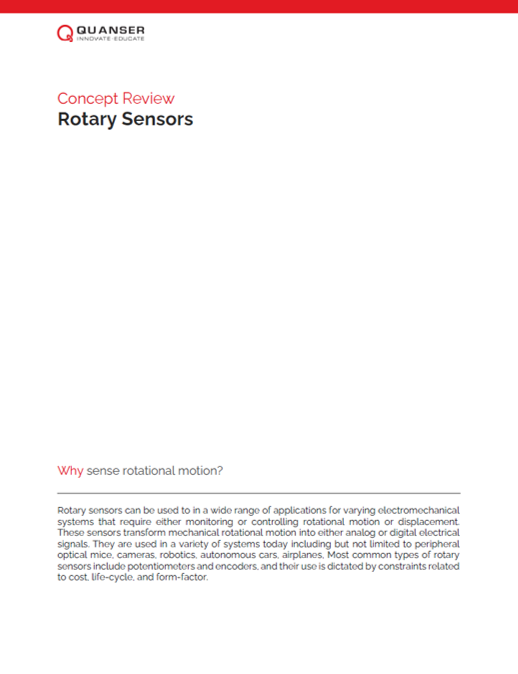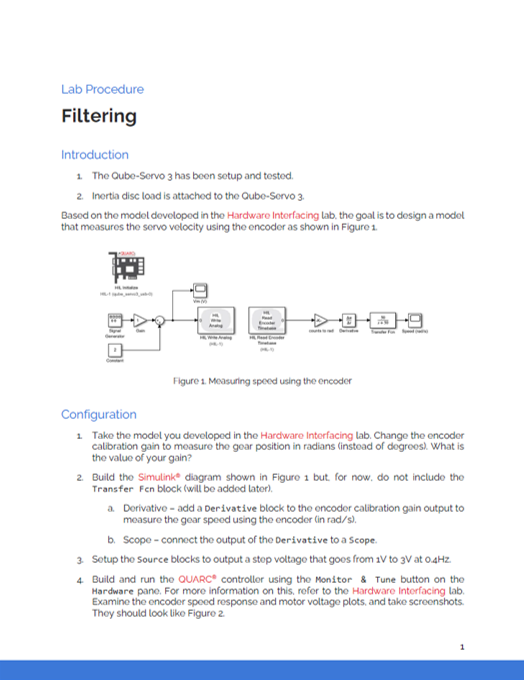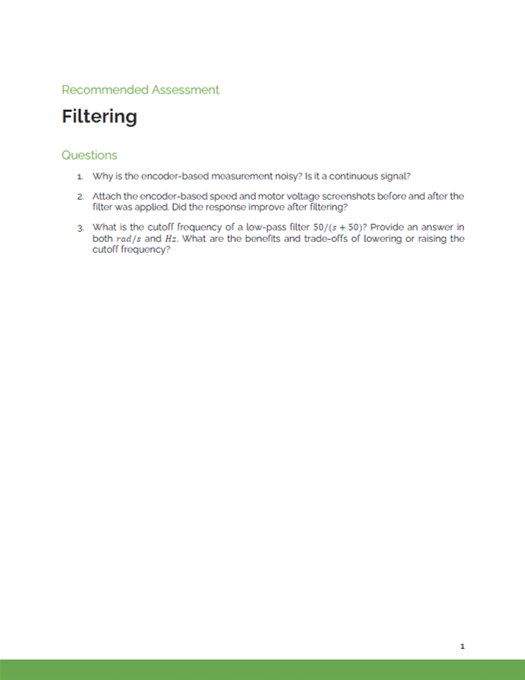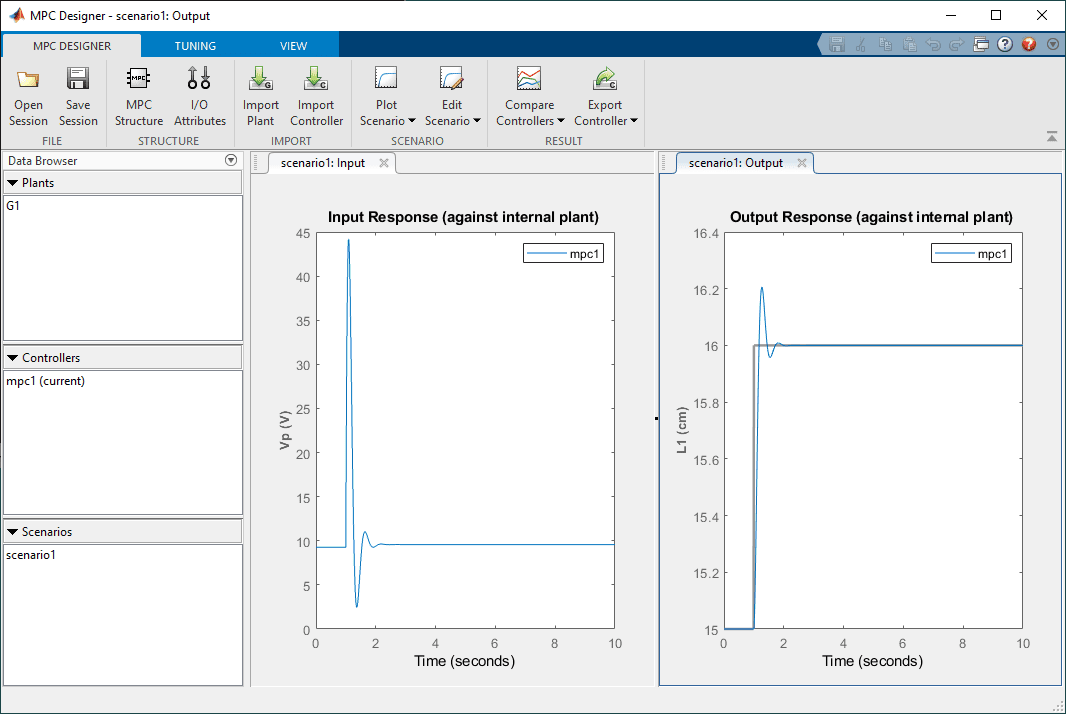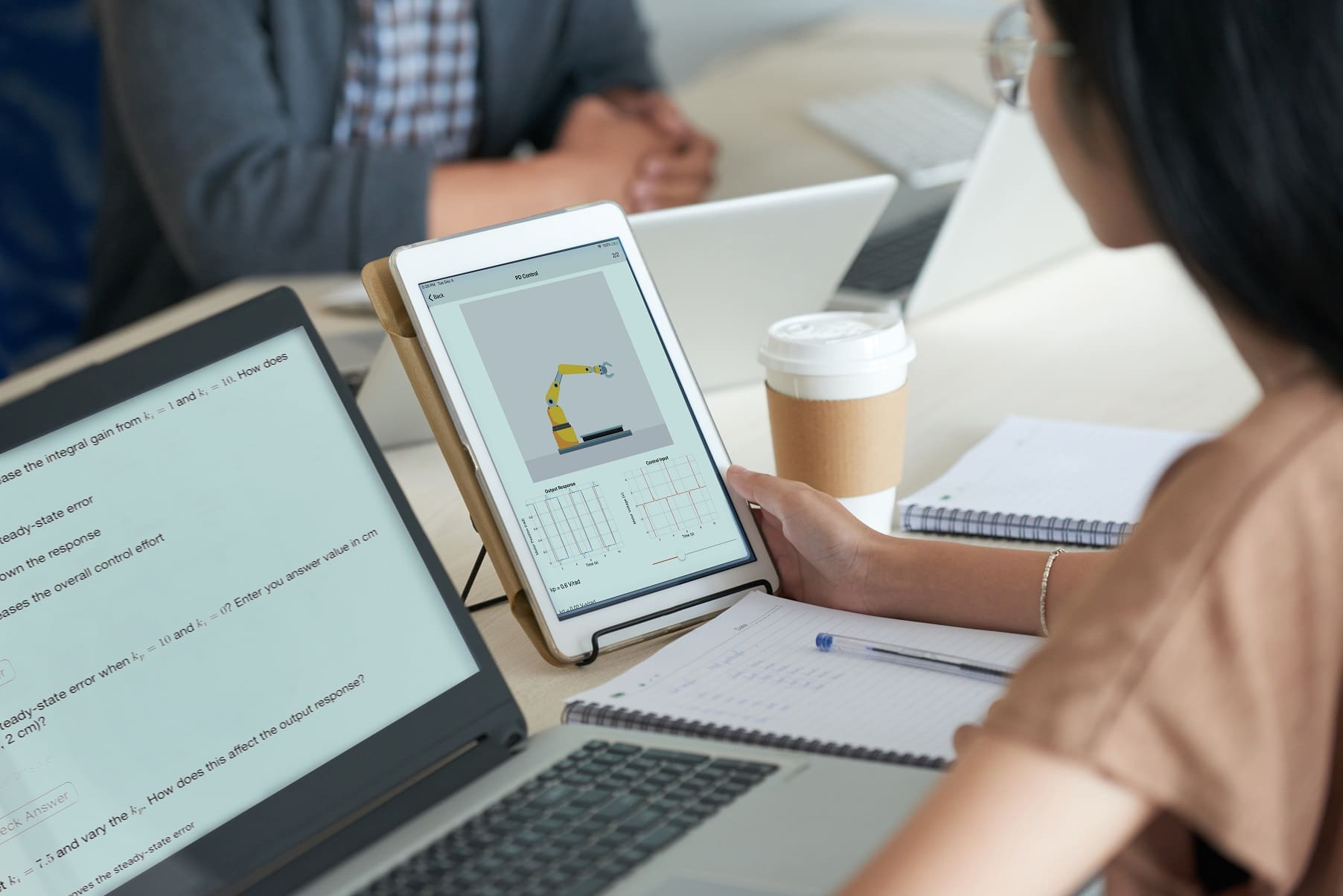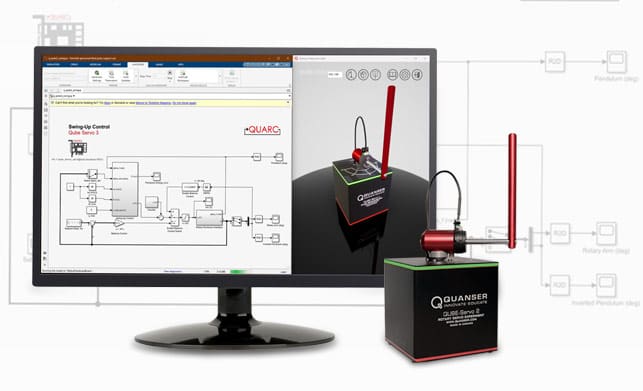
Quanser's virtual plants have numerous benefits that let you enhance lab experiences with digital twins, and I want to elaborate on some of them in this blog. In a previous blog, I talked about why a servo-motor is a fundamental, flexible and foundational teaching device for mechatronics, robotics and control systems. This reflects why the Qube-Servo system integrated into hundreds of labs worldwide! My colleague Lorena also talked about Quanser's new Qube-Servo 3, the updates to it's design and new features added.
 I am excited to announce that a high-fidelity digital twin of the Qube-Servo 3 with stunning visualizations is now available! It is the latest release in the Quanser Interactive Labs collection of our most popular experiments.
I am excited to announce that a high-fidelity digital twin of the Qube-Servo 3 with stunning visualizations is now available! It is the latest release in the Quanser Interactive Labs collection of our most popular experiments.
 I am excited to announce that a high-fidelity digital twin of the Qube-Servo 3 with stunning visualizations is now available! It is the latest release in the Quanser Interactive Labs collection of our most popular experiments.
I am excited to announce that a high-fidelity digital twin of the Qube-Servo 3 with stunning visualizations is now available! It is the latest release in the Quanser Interactive Labs collection of our most popular experiments.
Unlimited access
A classic challenge educators face is related to just how much time is sufficient for practical hands-on lab activities in any course. Managing lab hours for a class of hundreds of students in multiple batches is a non-trivial problem. Even when the logistics are handled correctly, the correct flow in a lab is required to ensure a good educational experience. In my opinion, students must prepare before arriving to the lab with a pre-lab questionnaire or set of exercises or risk missing the big-picture and point of the entire lab. After the lab, students should go through a secondary critical thinking questionnaire to validate the experience they just had, or risk not getting closure from relating that experience to course material and learning outcomes. For this reason, all our curriculum comes with pre-lab reference material in the form of concept reviews and application guides, in-lab procedures to encourage scientific exploration and point to interesting phenomenon, and finally post-lab recommended assessments to raise critical thinking questions. You can see some sample documentation for the Qube Servo 3 below. Despite this flow, getting access to real hardware often amounts to a couple of hours every other week at best. This is just not enough! Imagine a scenario in which each of your students have access to a digital twin. If you want more information on what that precisely is, here is a good review. Students can first run the lab procedures with this virtual device directly at home at their own pace and time. They can explore course concepts in implementation as many times as it takes to get to their comfort level before coming to a lab to access the exact piece of equipment in real life. The cherry on top? The code they develop at home to work with the digital twins transfers directly to the hardware. No tinkering required, which enhances their overall lab experience with digital twins.Exploration
Ever had to fight for budgets to repair equipment or replace it entirely because of a ridiculous control gain that sent a device to its death? It happens, as a natural part of engineering exploration. But it also brings with it an expensive and time-consuming process of dealing with the consequences. Virtual digital twins of real hardware in your lab do not have this problem at all. Send a virtual load disk flying off the servomotor? No problem, hit the reset button or restart your virtual Qube-Servo 3 workspace all over again. Have a go at it a second time and figure out why it happened. Find critical failure points of your controllers, tune your gains in real-time and let your students get to that understanding before they mess with hardware. Of course, our physical Qube-Servo 3 is student proof as well. However, the first time your students use it won't be their first time using a Qube. That is something of high value. Check out me trying to tune a swing-up controller to get the pendulum in the upright position using an energy-based method. [video width="1912" height="1028" mp4="https://www.quanser.com/wp-content/uploads/2023/10/virtual_qube_swingup.mp4" preload="auto"][/video]Energy-based swing-up controller tuning with the virtual Qube-Servo 3

